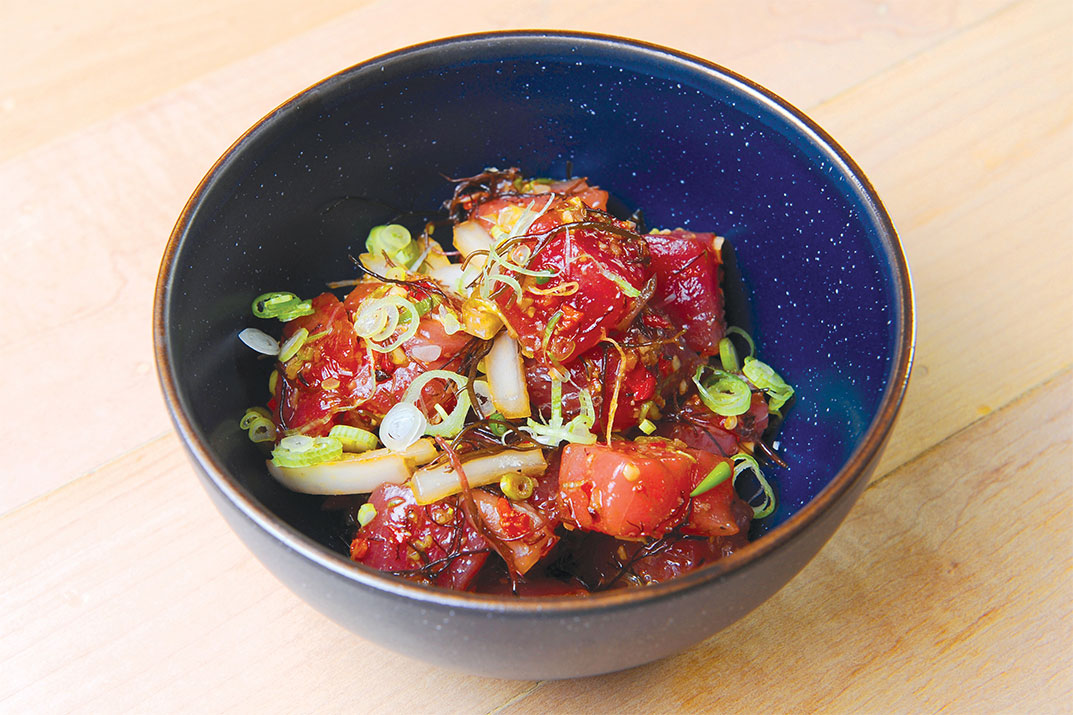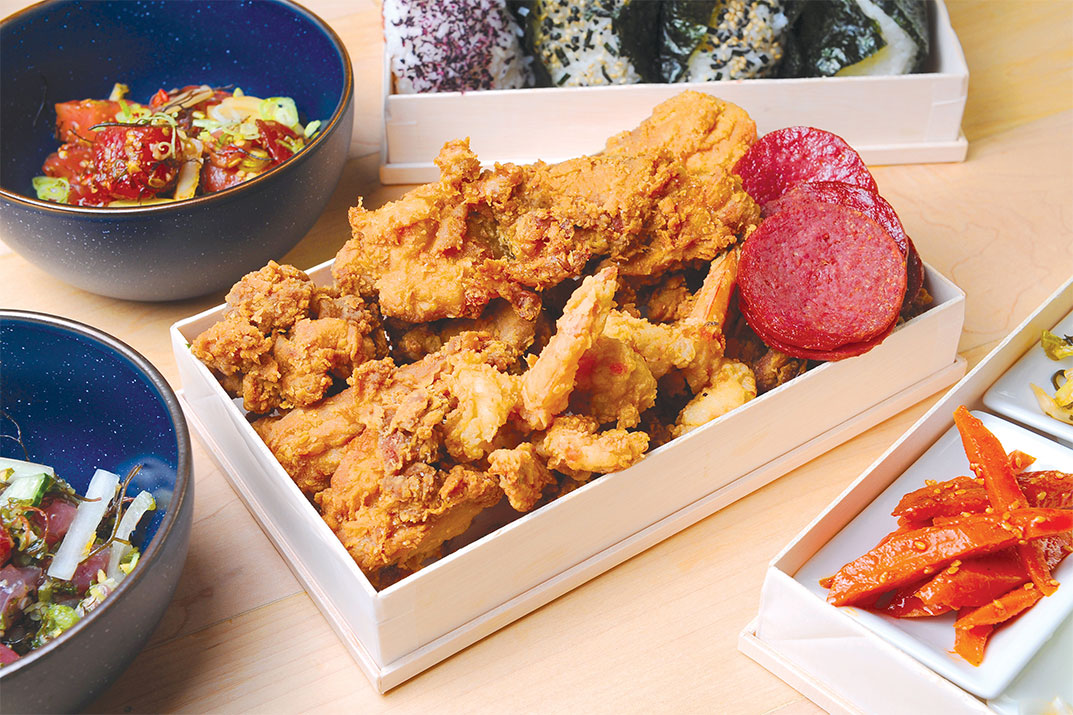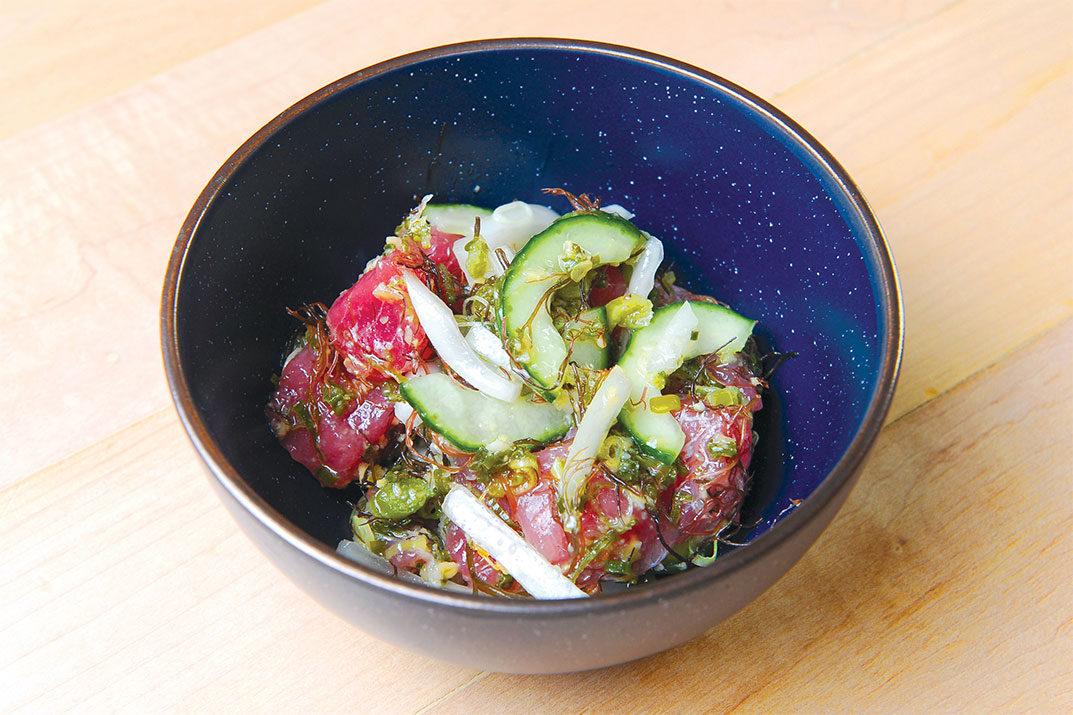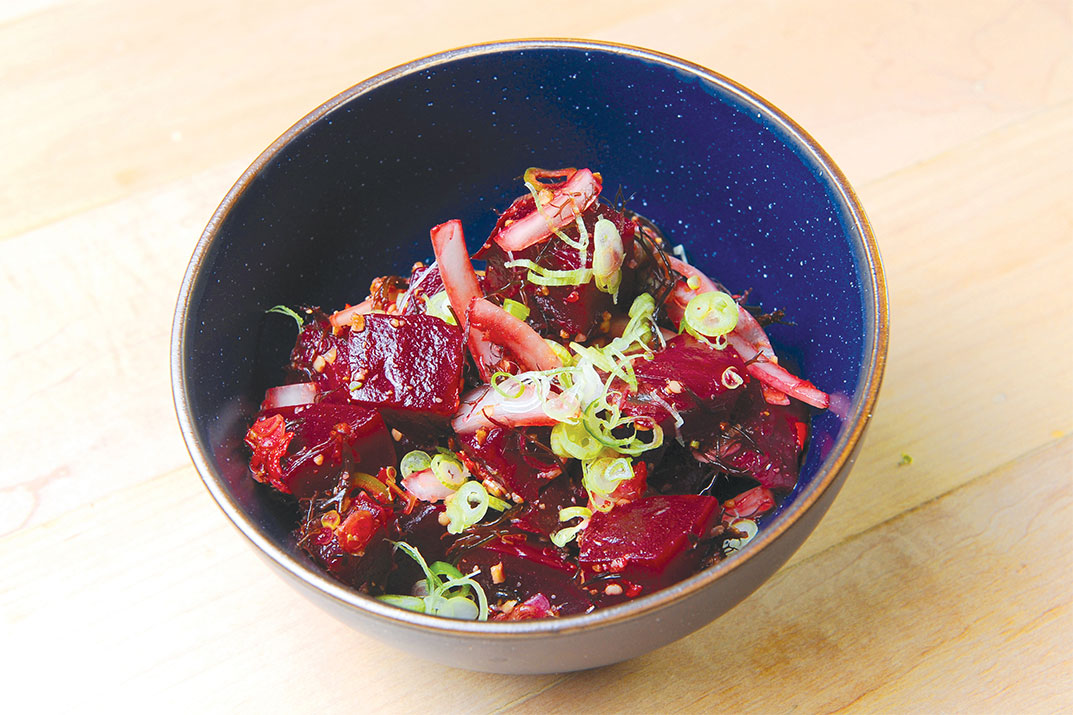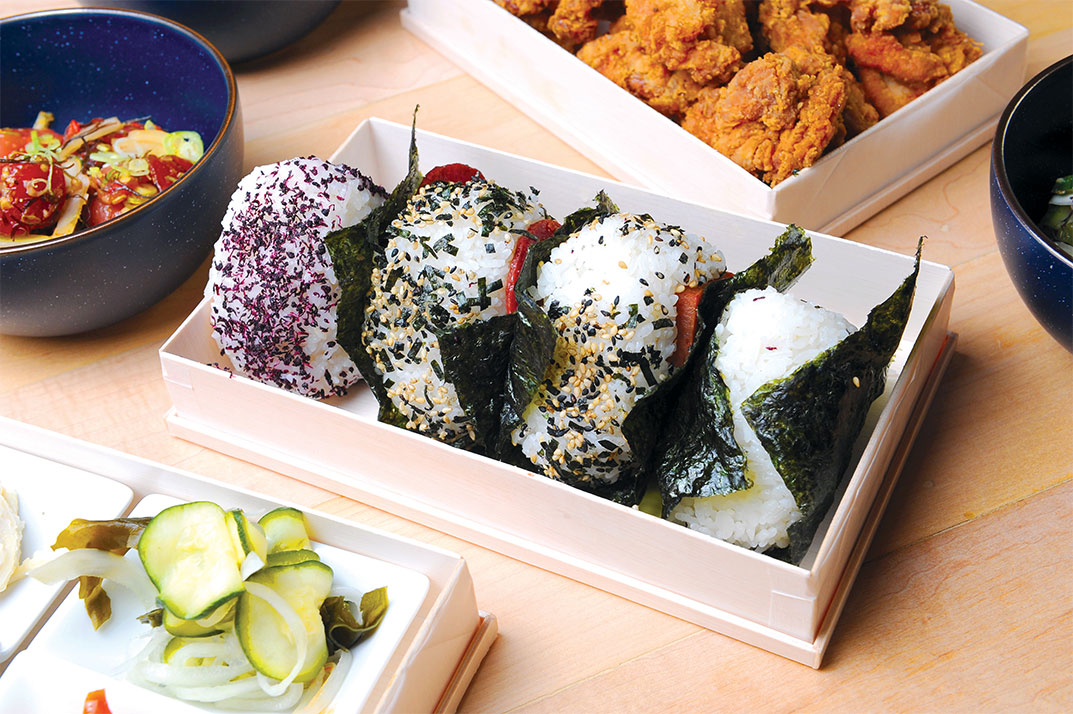ANNE LEE speaks with Nami Kaze chef/owner JASON PEEL
It’s rare to find new restaurants opening, but Jason Peel recently opened Nami Kaze at Pier 38. Chef Jason’s upscale modern approach on traditional okazuyas is quickly gaining lots of attention. From crispy fried ginger chicken, an homage to one of his favorite restaurants, the iconic now-closed Hanamalu Café on Kauai, where he’s from, to the handmade Goteborg musubi, there’s a little bit of nostalgia with the menu offerings. From a la carte to special bentos, and not to mention, the freshest poke and fish, Nami Kaze is right on the pier — you can’t get any fresher than that.
AL: What does Nami Kaze mean and what is the concept?
JP: Originally, I wanted to call it Ikigai — purpose of life — but when working with our design team, we came up with namikaze and I liked it. “Wind” and “wave” made sense because of our location since we’re right on the pier. Right now, we are a base okazuya. We cook it fresher and a little bit different, incorporating fresh vegetables and different options than your traditional okazuya. In the next few months, we want to be able to open up the izakaya (focusing on vegan/vegetarian) and sushi bar (offering really fresh seafood, led by my longtime friend Shane Tonokawa).
AL: Tell me about your team.
JP: My wife is currently the pastry chef at Hau Tree, and she will be also helping me make in-house breads and special tarts with Asian influences and incorporate Asato Family’s ice creams.
Brandon Nakachi is my general manager, who I’ve known forever. My assistant manager is Sammy. For our kitchen team, I have two of my former students, Binh and Reed. Davin is working with our sushi team, and he’s on the road to become a great sushi chef.
AL: You’re well known in the culinary industry. Tell me about this journey.
JP: I didn’t have any interest in cooking until my 20s. I came to Oahu for school, and I went to University of Arizona for aeronautical engineering. It wasn’t my thing. I came back to University of Hawaii at Manoa and wanted to do something with my hands and create. My friend Rich Miano was opening up a bar and grill, and that’s how I started cooking. I graduated from Kapiolani Community College and met Ian Russo who was the executive chef at Michel’s at the time. I worked with him and became sous chef in less than a year and a half.
AL: You earned that title of sous chef at 23 years old. How did you become an instructor at Kapiolani Community College?
JP: Working at Michel’s was a really great foundation for me. I then went to work with Roy’s in the kitchen, and I wanted the flexibility to go back to UH for teaching. I wanted to be able to offer that lifestyle to my son, as being in a restaurant, you work a lot of hours. About three years later, I ended up taking a position at Roy’s as I realized that I really didn’t like school, sitting in a classroom. I was able to open Roy’s Waikiki as executive chef and was there for eight years. That itch to teach was still there, and I went to KCC for six years as a culinary instructor in the third-year program at CIP, as well as teaching the competition team.
AL: Tell me about some of the items you prepared for us today.
JP: We have four different kinds of poke (market price): Triple Garlic Miso (like our California with avocados and Thai chiles to give it a kick); Hapa-style Poke (basic Hawaiian style with Thai chiles); Wasabi Ginger Scallion (with kizami wasabi); and Spicy Ahi.
These are also available in different styles of fresh fish and protein (salmon, hamachi, nakaochi, pickled beets and fried tofu).
We have four different handmade musubis (prices vary): simple nori musubi, Goteborg musubi (popular on Kauai) with a cured sausage similar to salami, the infamous Spam musubi and our ume musubi.
The two nostalgic items are the Ginger Fried Chicken and Fried Chili Shrimp (prices vary). This is my take on my memories on eating at Hanamalu Café. When
I was growing up on Kauai, we would go eat at the tea house . The kids are now running Kono Hiki, and they have the ginger fried chicken there.
See more articles from: Nami Kaze

